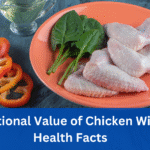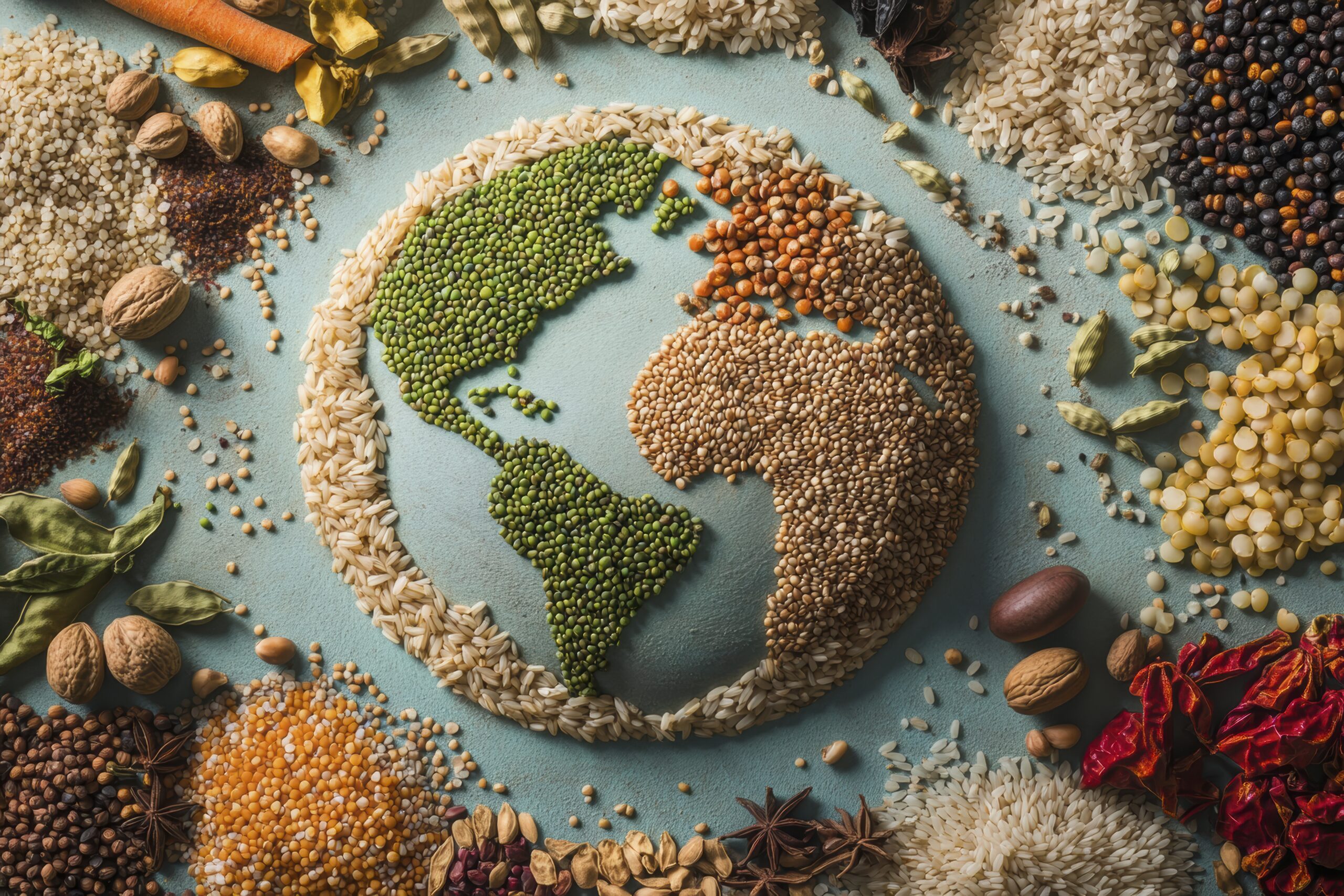In the dynamic landscape of global nutrition, few grains have captured attention quite like quinoa. Often referred to as a “superfood,” quinoa has emerged as a staple in health-conscious kitchens, trendy eateries, and dietary plans worldwide. Its meteoric rise from a traditional Andean crop to a globally celebrated grain reflects a broader shift toward nutrient-dense, plant-based eating in the 21st century.
This article delves into why quinoa is considered an essential grain in the new world diet, exploring its origins, nutritional powerhouse qualities, culinary versatility, and its potential to support global food security and sustainable agriculture.
The Origins of Quinoa: Ancient Grain, Modern Appeal
Quinoa (pronounced keen-wah) is not actually a cereal grain like wheat or rice, but rather a pseudo-cereal. It comes from the seed of the plant Chenopodium quinoa, native to the Andean region of South America, primarily Bolivia, Peru, and Ecuador.
Historians trace quinoa cultivation back more than 5,000 years, where it was a dietary cornerstone for the Inca civilization, who referred to it as the “mother of all grains.” The Incas believed quinoa to be sacred, using it not only as sustenance but in religious rituals and royal ceremonies.
However, Spanish colonization suppressed quinoa cultivation in favor of European crops, nearly wiping out this indigenous staple. Only in recent decades has quinoa been “rediscovered” by nutritionists, chefs, and consumers worldwide—reclaiming its title as an essential food source for modern times.
The Nutritional Brilliance
What sets quinoa apart from other grains is its unique and comprehensive nutritional profile. It’s one of the very few plant-based foods that is a complete protein, meaning it contains all nine essential amino acids that the human body cannot produce on its own.
Key Nutritional Highlights (per 1 cup cooked):
-
Calories: ~220
-
Protein: 8 grams
-
Fiber: 5 grams
-
Fat: 3.5 grams (mostly unsaturated)
-
Carbohydrates: 39 grams
-
Magnesium: 30% RDA
-
Iron: 15% RDA
-
Zinc, Potassium, Phosphorus, and Folate: Significant levels
-
Gluten-Free: Naturally safe for celiac patients or gluten-sensitive individuals
This rich composition makes it an excellent food for people with dietary restrictions, vegans, vegetarians, and those aiming to reduce their intake of processed or animal-based proteins.
Health Benefits
1. Supports Muscle Growth and Repair
Quinoa’s complete protein status makes it ideal for athletes, bodybuilders, and anyone looking to maintain muscle mass. Most plant-based protein sources, such as beans and grains, lack one or more essential amino acids—but not quinoa.
2. Aids in Weight Management
The combination of protein and fiber helps increase satiety, reducing overeating and unnecessary snacking. It has a low glycemic index, which means it causes a slower rise in blood sugar, supporting metabolic health and insulin regulation.
3. Promotes Heart Health
Rich in heart-healthy fats (such as oleic acid and alpha-linolenic acid), magnesium, and antioxidants, it can contribute to reduced inflammation and better cardiovascular function.
4. Gluten-Free and Anti-Inflammatory
People with gluten sensitivities often lack variety in their diets. It provides a nutritionally rich alternative to wheat, barley, and rye. Its anti-inflammatory flavonoids, including quercetin and kaempferol, further enhance its healing potential.
5. Supports Gut Health
It contains prebiotic fiber that feeds the healthy bacteria in the gut, supporting digestion, nutrient absorption, and immunity.
Culinary Versatility: From Salads to Stews
One of quinoa’s biggest assets in the modern diet is its adaptability. It cooks quickly—typically in 15–20 minutes—and absorbs flavors well, making it a perfect base or supplement in a variety of cuisines.
Popular Ways to Use:
-
Salads: Like tabbouleh or quinoa bowls with vegetables and dressings.
-
Breakfasts: Mixed with almond milk, fruit, and cinnamon as a porridge.
-
Soups and Stews: Adds texture and protein to broths and hearty dishes.
-
Baking: Quinoa flour can be used in gluten-free bread, muffins, and pancakes.
-
Meat Substitutes: Combined with beans and spices to make veggie burgers or meatless meatballs.
In short, quinoa’s neutral taste, fluffy texture, and nutritional richness make it an ideal choice for both savory and sweet recipes.
Quinoa and Global Food Security
Beyond individual health, quinoa plays a critical role in addressing global food sustainability and malnutrition.
1. High Yield and Climate Adaptability
It thrives in harsh environments—from high altitudes to arid regions. Its ability to grow in poor soils with minimal water makes it an attractive crop for regions vulnerable to climate change.
2. A Sustainable Protein Source
Animal agriculture is resource-intensive and contributes heavily to greenhouse gas emissions. As a plant-based protein, quinoa offers a lower-impact alternative with high nutritional value.
3. Recognized by the United Nations
In 2013, the United Nations declared it the “International Year of Quinoa,” recognizing its potential to contribute to global food security, particularly in regions facing poverty, undernourishment, and limited agricultural options.
Economic and Cultural Revival in South America
The global popularity of quinoa has brought economic opportunities to indigenous farmers in the Andes, particularly in Bolivia and Peru.
However, this boom has also triggered controversies and challenges:
-
Price Inflation: Increased global demand has raised prices, sometimes making it less accessible to the very populations that have depended on it for generations.
-
Monoculture Risks: The push to scale up quinoa farming has led to soil depletion and biodiversity concerns in some areas.
Sustainable farming practices, fair trade agreements, and diversified agriculture are key to ensuring that quinoa continues to benefit both producers and consumers.
Quinoa vs. Traditional Grains: A Nutritional Comparison
| Nutrient (per 100g cooked) | Quinoa | Brown Rice | White Rice | Couscous |
|---|---|---|---|---|
| Calories | 120 | 112 | 130 | 112 |
| Protein | 4.1g | 2.6g | 2.4g | 3.8g |
| Fiber | 2.8g | 1.8g | 0.4g | 1.4g |
| Iron | 1.5mg | 0.4mg | 0.2mg | 0.4mg |
| Magnesium | 64mg | 44mg | 12mg | 8mg |
| Gluten-Free | Yes | Yes | Yes | No |
As shown, quinoa generally surpasses traditional grains in terms of protein, fiber, and micronutrient content, supporting its reputation as a superior grain alternative in the modern diet.
Quinoa in Popular Diets
Quinoa has seamlessly integrated into several modern dietary trends, including:
-
Vegan and Vegetarian Diets: Offers complete protein without animal products.
-
Mediterranean Diet: Works well with olive oil, herbs, legumes, and vegetables.
-
Paleo and Gluten-Free Diets: A natural alternative to grain-based carbs.
-
Weight Loss and Low-Glycemic Diets: High satiety and blood sugar control.
Its widespread compatibility across different food philosophies makes quinoa a universal grain for the new era.
Tips for Cooking and Storing
1. Rinse before cooking:
Quinoa seeds are coated with saponins, natural compounds that can taste bitter. Rinse thoroughly under cold water to remove them.
2. Use the 2:1 ratio:
Two cups of water for every one cup of quinoa yields fluffy, well-cooked grains.
3. Storage:
Cooked quinoa can be refrigerated for 4–5 days or frozen for up to 2 months, making it perfect for meal prepping.
Future Prospects: As a Global Super Crop
As the global population continues to grow and climate challenges intensify, quinoa may play a critical role in future agriculture:
-
Researchers are developing salt-tolerant and heat-resistant strains.
-
Quinoa is being introduced in Africa, Asia, and the Middle East to diversify local crops.
-
Governments and NGOs are funding it as part of food aid and resilience programs.
Its adaptability and resilience give it the potential to be a cornerstone crop in future food systems, not just a fashionable superfood.
Conclusion: A Grain for the Future
Quinoa’s journey from the sacred seed of the Incas to a global dietary staple represents more than just a culinary trend. It embodies a shift in how the world eats—toward health, sustainability, and cultural rediscovery. With its complete protein profile, adaptability, and profound health benefits, it has rightly earned its status as an essential grain in the new world diet.
Whether you’re striving for personal wellness, exploring global cuisines, or advocating for food sustainability, it deserves a prominent place on your plate. In embracing quinoa, we reconnect with ancient wisdom while forging a healthier, more sustainable future—one bowl at a time.
FAQs
1. What is quinoa?
Quinoa is a gluten-free seed from the Andes, often called a “pseudo-grain,” rich in protein and nutrients.
2. Why is quinoa considered a superfood?
It’s a complete protein, rich in fiber, vitamins, and minerals, and offers numerous health and dietary benefits.
3. Is quinoa gluten-free?
Yes, it is naturally gluten-free and safe for people with celiac disease or gluten sensitivity.
4. How does quinoa support weight loss?
High in protein and fiber, it promotes satiety, helping reduce appetite and support healthy weight management.
5. Can quinoa replace rice or pasta?
Absolutely. It is a nutritious substitute for rice, pasta, couscous, and other grains in many recipes.
6. How long does it take to cook quinoa?
It cooks in about 15–20 minutes and requires rinsing to remove its natural bitterness (saponins).
7. Is quinoa good for vegans and vegetarians?
Yes. It provides all nine essential amino acids, making it a complete protein source for plant-based diets.
8. What are the health benefits of quinoa?
It supports heart health, digestion, muscle repair, blood sugar control, and overall nutrition.
9. Where does quinoa come from?
It originates from the Andes mountains, primarily in Bolivia, Peru, and Ecuador, where it’s been cultivated for millennia.
10. Is quinoa sustainable for the environment?
Yes. It grows in harsh climates, requires less water than many grains, and supports global food security.





